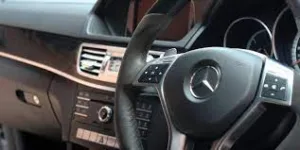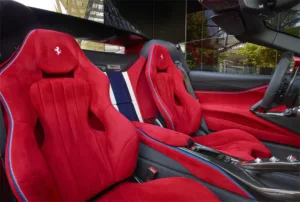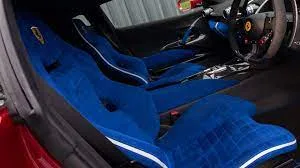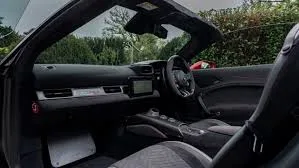News
The Future of Car Care: Innovations, Trends, and the Road Ahead
Part 1: The Evolution of Car Care – From Basics to Breakthroughs
Car care has always been more than just soap, water, and elbow grease. It’s a reflection of how people view their vehicles—whether as simple modes of transportation, prized possessions, or rolling works of art. Over the decades, the car care industry has evolved dramatically, influenced by cultural shifts, consumer expectations, and advances in science and technology. What began as a basic effort to keep dirt off paint has grown into a multi-billion-dollar industry filled with high-tech products, precision techniques, and lifestyle-driven philosophies. To understand the future of car care, it’s essential first to look back at where it began and trace the journey of how we arrived at today’s innovations.
The Humble Beginnings: Soap, Water, and Pride
In the early days of motoring, car care was simple. Cars were rare, expensive, and often seen as luxury items for the wealthy. Owners typically cleaned their vehicles with household soap, buckets of water, and rags. There was little thought given to paint preservation or advanced protection—the goal was simply to remove dust and mud.
Paint technology itself was rudimentary. Early automotive finishes were often lacquers or enamels that lacked the durability of today’s clear coats. These paints oxidized and faded quickly under the sun. Because of this, regular polishing with abrasive compounds became necessary to restore shine. Owners who took pride in their vehicles would spend weekends hand-polishing, often with homemade concoctions of oils and waxes.
During this period, car care was more about personal pride than performance. People treated the task of washing and polishing their cars as a reflection of responsibility and social status. A shiny car implied not just wealth but also attentiveness.
The Birth of Modern Car Care Products
As automobiles became more common in the 20th century, the need for specialized car care products grew. Companies began developing shampoos formulated specifically for automotive paint, which were gentler than household detergents. Waxes made from natural carnauba, a plant-based wax sourced from Brazil, gained popularity for their deep gloss and protective qualities.
The mid-20th century marked a turning point with the rise of brands dedicated solely to car care. These companies began offering entire product lines: cleaners, polishes, waxes, and protectants. This was also the era when car washes became more common, making cleanliness more accessible to the average driver.
By the 1970s and 80s, synthetic chemistry entered the picture. Scientists created polymer-based waxes and sealants that lasted longer than natural carnauba. These products were easier to apply, more resistant to heat, and better suited for everyday drivers who wanted durability without frequent reapplication.
From Function to Aesthetics
As automotive technology advanced, so did consumer attitudes. Cars were no longer simply utilitarian objects; they became expressions of identity. Muscle cars of the 60s, luxury sedans of the 80s, and the sports cars of the 90s all carried with them a sense of style that owners wanted to showcase.
This shift gave rise to a more aesthetics-driven approach to car care. A glossy, swirl-free paint job wasn’t just about preservation—it was about turning heads. Interior care also gained prominence during this era. Leather conditioners, vinyl protectants, and fabric cleaners became standard items for car enthusiasts.
The detailing industry emerged as a professionalized service during this time. Shops began offering paint correction, high-end waxing, and deep-clean interior services. Owners who wanted more than a quick wash could now pay experts to restore their vehicles to near-showroom condition.
The Rise of Detailing Culture
By the late 1990s and early 2000s, detailing had grown into a culture of its own. Online forums and early websites became hubs for enthusiasts to share techniques, product reviews, and before-and-after photos. Terms like “paint correction,” “swirl marks,” and “dual-action polishers” entered the vocabulary of everyday car enthusiasts.
Car shows and concours events further elevated detailing. Vehicles were judged not only on rarity and restoration but also on the quality of their finish. A flawless mirror-like paint surface could mean the difference between first and second place. This competitive spirit pushed both enthusiasts and professionals to innovate, experiment, and refine techniques.

The Science of Surfaces: Clear Coats and Beyond
One of the most significant changes in car care was the introduction of modern clear coat systems. Starting in the 1980s, automakers began applying a transparent protective layer over colored paint. This improved durability, gloss, and resistance to UV rays. However, clear coats also introduced new challenges—they were more prone to scratching, swirling, and water spotting if not maintained properly.
This innovation gave birth to an entirely new field within detailing: paint correction. Instead of simply applying wax to hide imperfections, detailers learned to use machine polishers and specialized compounds to level out clear coat defects. The result was a truer, more permanent restoration of gloss.
As paint technology evolved, so did protection products. Sealants became popular for their longevity. Later, nanotechnology introduced ceramic coatings—liquid polymers that bond chemically to the surface, creating an extremely durable, hydrophobic, and glossy barrier.
The Role of Technology in Redefining “Clean”
Technology has consistently reshaped car care standards. Where once a bucket and sponge were sufficient, modern detailing often involves foam cannons, orbital polishers, paint thickness gauges, and even inspection lights that mimic daylight to reveal microscopic imperfections.
For interiors, advancements like steam cleaning, ozone treatments, and UV-protective coatings have raised expectations for cleanliness and preservation. Professional-grade vacuums and extractors can remove deep-seated dirt and allergens, making car interiors not just clean but healthier.
The digital revolution also changed car care. Tutorials on YouTube, product demonstrations on Instagram, and product reviews on TikTok have made knowledge more accessible than ever. A teenager with curiosity and internet access can now learn professional-grade techniques in hours, something that previously took years of apprenticeship.
Shifting Consumer Expectations
Perhaps the most powerful driver of change in car care has been consumer demand. As cars became more expensive and sophisticated, owners wanted more effective ways to protect their investments. Luxury buyers expected their vehicles to look pristine for years, while enthusiasts wanted their weekend toys to stand out at shows.
This demand reshaped the industry. Brands began producing more specialized products—ceramic coatings, graphene-infused sprays, fabric guards, trim restorers—each designed to address very specific needs. The rise of subscription-based models, mobile detailing services, and eco-friendly products further reflected how companies adapted to what customers valued most: convenience, performance, and sustainability.
The Cultural Dimension of Car Care
Car care has also become a cultural symbol. In some communities, a meticulously clean car signals discipline and success. In others, customization and bold styling—often protected by wraps and coatings—are expressions of individuality. Social media has amplified this culture. Viral videos of foam-covered cars, ceramic coating water tests, and dramatic before-and-after transformations have turned detailing into entertainment.
This cultural influence cannot be understated. It has pushed even casual car owners to care more about appearance, creating a ripple effect across the entire industry. Today, even people who don’t consider themselves “car enthusiasts” are more likely to invest in advanced cleaning products or occasional professional detailing services.
The Balance of DIY and Professional Care
Another breakthrough in the evolution of car care is the way DIY and professional services coexist. In the past, there was a clear division: professionals handled advanced restoration, while everyday owners stuck to basic washing. Today, that line is blurred. Affordable tools and online education empower DIYers to achieve near-professional results at home. At the same time, the most advanced services—multi-stage paint correction, ceramic coatings, paint protection film—still require professional expertise.
This dual landscape has expanded the industry rather than diminished one side. Enthusiasts buy products for weekend projects, while professionals serve customers who value convenience and guaranteed results. Both feed into each other, driving innovation and raising standards.
Conclusion of Part 1
The evolution of car care has been a journey from the basics of soap and water to the breakthroughs of nanotechnology and digital learning. It reflects not just changes in automotive materials but also cultural shifts in how people view their vehicles. What began as a simple task of removing dirt has become an entire ecosystem of products, services, and communities devoted to preserving beauty, performance, and value.
As we look ahead, this history provides critical context. The trends shaping today’s industry—eco-friendly solutions, advanced protective technologies, personalization, and digital influence—did not emerge from nowhere. They are the natural continuation of a century-long journey of innovation and passion. In Part 2, we’ll examine the current trends that are actively reshaping the car care industry and setting the stage for an even more exciting future.

Part 2: Current Trends Driving the Car Care Industry
The car care industry today is not simply about keeping vehicles clean; it is a dynamic marketplace shaped by global trends, new technologies, environmental concerns, and cultural shifts. Consumers are more informed than ever, expectations are higher, and companies constantly innovate to meet evolving demands. This part explores the major trends shaping the industry right now, from eco-friendly solutions and high-tech protection to digital influence and lifestyle-driven services.
The Eco-Friendly Movement: Clean Cars, Cleaner Planet
One of the strongest currents in modern car care is sustainability. Consumers across the globe are increasingly aware of environmental issues, and their values are reflected in their purchasing choices. Traditional car shampoos, waxes, and degreasers often contained harsh chemicals, phosphates, or solvents that polluted waterways and harmed ecosystems. Today, brands are racing to offer biodegradable soaps, waterless washes, and products with minimal environmental footprint.
Water usage is another central issue. In many regions, droughts and water shortages make traditional driveway washing unsustainable. This has led to innovations like waterless wash products and rinseless solutions that allow cars to be cleaned using just a few liters of water. Mobile detailing businesses, particularly in urban areas, rely on these products to deliver eco-conscious services that align with modern values.
Even packaging is evolving. More companies are embracing concentrated formulas that require smaller bottles, reducing plastic waste. Refillable systems are also gaining traction, where customers buy one durable container and refill it through pouches or bulk dispensers. Sustainability is no longer a niche—it has become a mainstream expectation.
The Rise of Ceramic Coatings and Advanced Protection
In recent years, few products have had as dramatic an impact on the car care industry as ceramic coatings. These nanotechnology-based solutions create a semi-permanent bond with vehicle paint, offering protection that lasts years instead of months. Ceramic coatings provide exceptional hydrophobicity, UV resistance, and scratch resilience, setting new benchmarks for what car owners expect from protection.
Graphene, a material stronger than steel yet nearly weightless, has entered the conversation as the next frontier. Some companies now market graphene-infused coatings and sprays, promising improved durability and slickness compared to traditional ceramics. While debates continue about how much graphene truly enhances performance, its presence signals the appetite for continuous innovation in surface protection.
Paint protection film (PPF) also plays a vital role in modern car care. Originally developed for military applications, PPF is now widely used to shield vehicle surfaces from chips, scratches, and UV damage. Innovations in self-healing films—where minor scratches vanish with heat—make this product especially appealing for luxury and performance car owners. Together, coatings and films represent a shift from temporary shine to long-term preservation.
Digital Influence: Social Media and Online Communities
The digital age has transformed car care into a highly visible, shareable culture. Platforms like YouTube, TikTok, and Instagram have turned detailing into entertainment. Millions of people watch satisfying videos of foam cannons covering cars in thick suds or detailers restoring neglected vehicles to pristine condition. These viral moments drive consumer awareness and create surges in product demand.
Education is another crucial factor. Online tutorials have democratized knowledge, empowering ordinary drivers to attempt advanced detailing techniques at home. Product reviews and demonstrations are no longer controlled by brands but by influencers and enthusiasts who build trust with audiences. A positive review from a respected detailer can catapult a new product to stardom overnight.
E-commerce complements this trend. Instead of relying on auto shops, consumers can now browse online stores offering specialized products from around the globe. Subscription boxes, online bundles, and influencer-branded kits make car care more accessible and exciting. Digital influence has turned the once-niche detailing hobby into a mainstream phenomenon.
Convenience as a Core Value: Mobile and On-Demand Services
Modern lifestyles place a premium on convenience, and car care services are adapting accordingly. Traditional fixed-location car washes are being challenged by mobile detailing businesses that come directly to the customer. Equipped with water tanks, generators, and eco-friendly products, these services save customers time while offering professional results at home or at the office.
Subscription models also reflect this convenience-driven mindset. Some businesses now offer monthly detailing plans, where customers pay a fixed fee for regular washes, maintenance, or protective treatments. This eliminates the hassle of scheduling appointments and keeps vehicles consistently in top condition.
Technology is further enhancing convenience. Mobile apps allow customers to book, track, and pay for services seamlessly. AI-driven platforms can even recommend services based on vehicle type, weather conditions, or usage patterns. For busy professionals or families, convenience has become just as important as quality.
Health and Hygiene: Beyond Aesthetics
The COVID-19 pandemic reshaped how people think about cleanliness. What was once primarily about aesthetics has expanded to include hygiene and health. Interior detailing now emphasizes sanitization, with products designed to kill bacteria, viruses, and allergens. Ozone machines, UV sterilizers, and antimicrobial coatings are increasingly incorporated into services.
Even beyond pandemic concerns, awareness of indoor air quality has risen. Modern interior cleaning doesn’t just vacuum visible dirt; it extracts deep-seated contaminants and neutralizes odors at the molecular level. Parents, in particular, are driving demand for cleaner, healthier interiors where children spend significant time. This intersection of hygiene and car care has opened new opportunities for products and services that go beyond shine.
The Growth of Customization and Lifestyle Car Care
Car care today is not only functional—it’s deeply personal. Owners want their vehicles to reflect their style, and care products play an important role in maintaining that look. Matte paints, satin finishes, vinyl wraps, and custom colors require specialized products that protect without altering appearance. Traditional waxes that add gloss are unsuitable for matte finishes, so new formulations are designed specifically for these unique surfaces.
Interior customization also plays a role. Luxury cars with exotic materials—suede, Alcantara, carbon fiber—require tailored care solutions. The rise of lifestyle car culture, from off-road adventurers to urban tuners, has fueled demand for niche products. Overlanding enthusiasts, for example, want protective coatings that resist mud, scratches, and UV rays during outdoor excursions.
This personalization extends to how products are marketed. Brands now target specific lifestyles, offering rugged lines for adventure vehicles, high-gloss kits for show cars, and minimalist eco-friendly options for city drivers. Car care has become an extension of identity, aligning with fashion, hobbies, and culture.

Automation and Smart Technology in Car Care
Another defining trend is the integration of automation and smart technology. Automatic car washes are becoming more advanced, using touchless systems that minimize the risk of scratches while improving efficiency. Robotics and AI are beginning to play roles in professional detailing, from precision polishing to paint inspection.
At home, smart devices are entering the picture. Some companies are developing automated polishing robots or AI-powered apps that guide users through detailing processes step by step. Innovations in sensor technology also allow coatings to signal when they are wearing thin, prompting reapplication.
The automotive industry itself is moving toward connected technology, and car care is following suit. Imagine a future where your car notifies you that its coating has degraded, automatically books a detailing appointment, and syncs with a subscription plan. While still in its early stages, smart car care represents the next frontier of convenience and performance.
Professional Detailing as a Growing Industry
Detailing has shifted from a hobbyist pursuit to a thriving professional industry. Training programs, certifications, and global networks of detailers highlight the growing professionalism of the field. High-end customers are willing to pay thousands of dollars for multi-day services that include paint correction, ceramic coating, and interior restoration.
This professionalization is also driving global standards. Events, trade shows, and competitions bring detailers together to exchange techniques and showcase innovations. The industry now enjoys recognition as a skilled craft, with many professionals positioning themselves as artisans who combine science and artistry.
At the same time, entry-level services remain strong. Quick washes, express detailing, and affordable packages ensure that the industry caters to a wide demographic, from budget-conscious commuters to exotic car collectors. This diversity of offerings strengthens the overall market.
The Global Dimension of Car Care
Car care is no longer confined to specific regions—it is a truly global phenomenon. Trends often originate in one part of the world before spreading rapidly. For example, Japan’s meticulous approach to detailing influenced enthusiasts worldwide, particularly with techniques like paint correction and glass coatings. Similarly, the United States has been a hub for innovation in convenience and mobile services.
Emerging markets are also fueling growth. As car ownership rises in countries across Asia, Africa, and South America, demand for car care products and services is surging. Climate differences shape unique needs: hot, sunny regions prioritize UV protection, while colder areas focus on de-icing and salt removal. Globalization ensures that innovation spreads quickly, creating a diverse yet interconnected industry.
The Cultural Power of “Car Care as Content”
The cultural significance of car care has reached new levels through digital storytelling. What was once a mundane chore has become compelling content. Viewers worldwide find satisfaction in watching cars transform from neglected to pristine, a process that taps into universal themes of renewal and transformation.
This phenomenon has given rise to “detailfluencers”—content creators who build careers by documenting car care. These personalities not only shape consumer choices but also elevate detailing into mainstream entertainment. The line between marketing, education, and entertainment has blurred, creating an ecosystem where audiences learn, enjoy, and shop simultaneously.
Conclusion of Part 2
The car care industry today reflects the broader world: environmentally conscious, digitally connected, convenience-driven, and lifestyle-focused. Ceramic coatings, graphene, waterless products, social media influence, and smart technologies all point to an industry in motion, continuously reinventing itself to meet the needs of modern drivers.
At its core, car care remains about pride, protection, and performance—but the way those values are expressed has transformed dramatically. Whether through eco-friendly washes, long-lasting coatings, or AI-driven services, the trends shaping the present are setting the stage for a future that is more innovative and more exciting than ever.

